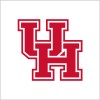Guilt and Expressive Writing for Reducing Alcohol Use in College Students
Alcohol Consumption

About this trial
This is an interventional prevention trial for Alcohol Consumption focused on measuring Drinking, Alcohol
Eligibility Criteria
Inclusion Criteria:
Inclusion criteria for the screening survey include
- Being between 18-26 years of age
- Being a registered UH student.
Inclusion criteria for longitudinal participation include
- Scoring 5+ and 7+ on the AUDIT-C for women/men respectively
- Being 18-26 years of age
- Being a registered UH student
- Providing consent to participate in the study
Exclusion Criteria:
Exclusion criteria for the screening survey include
- Not meeting inclusion criteria (i.e., not between 18-26 years of age, not a registered UH student)or unwillingness to participate.
Exclusion criteria for baseline include
- Not meeting any of the inclusion criteria, unwillingness to participate, and failure to provide consent.
Sites / Locations
Arms of the Study
Arm 1
Arm 2
Arm 3
Arm 4
Arm 5
Arm 6
Experimental
Experimental
Experimental
Experimental
No Intervention
Experimental
Alcohol-Guilt Condition
Distress-Guilt Condition
Alcohol-No Guilt Condition
Distress-No Guilt Condition
Neutral Control Condition
Personalized Normative Feedback
In this condition, participants are asked to write about an incident in which they drank heavily and experienced guilt. Participants in this condition will come into the lab one time each week for three weeks to complete the writing task. They will then complete follow-up surveys remotely, at 1 month, 3 months, 6 months, and 12 months.
In this condition, participants are asked to write about an upsetting incident where they experienced guilt. Participants in this condition will come into the lab one time each week for three weeks to complete the writing task. They will then complete follow-up surveys remotely, at 1 month, 3 months, 6 months, and 12 months.
In this condition, participants are asked to write about a negative drinking incident that they had experienced. Participants in this condition will come into the lab one time each week for three weeks to complete the writing task. They will then complete follow-up surveys remotely, at 1 month, 3 months, 6 months, and 12 months.
In this condition, participants are asked to write about an upsetting experience that has affected their life. Participants in this condition will come into the lab one time each week for three weeks to complete the writing task. They will then complete follow-up surveys remotely, at 1 month, 3 months, 6 months, and 12 months.
In this condition, participants are asked to write about the laboratory room in which they are seated. Participants in this condition will come into the lab one time each week for three weeks to complete the writing task. They will then complete follow-up surveys remotely, at 1 month, 3 months, 6 months, and 12 months.
Participants in the PNF condition will be given gender-specific personalized feedback regarding their alcohol use. Participants will be presented with the drinking estimates that they previously gave in addition to average gender-specific drinking estimates provided by 1124 students at the University of Houston. Feedback will be provided for drinking frequency (i.e., number of drinking days per week), and drinking quantity (i.e., the number of drinks consumed per week and number of drinks consumed per typical drinking occasion). Participants will also receive a printed a copy of the feedback for their records. PNF participants will receive feedback immediately after the baseline assessment. We also wanted to control for any differences that might be attributed to attention. Thus, participants will be scheduled to come in to the lab for two more sessions, during which time they will write about the laboratory room in which they are seated.
Outcomes
Primary Outcome Measures
Secondary Outcome Measures
Full Information
1. Study Identification
2. Study Status
3. Sponsor/Collaborators
4. Oversight
5. Study Description
6. Conditions and Keywords
7. Study Design
8. Arms, Groups, and Interventions
10. Eligibility
12. IPD Sharing Statement
Learn more about this trial
